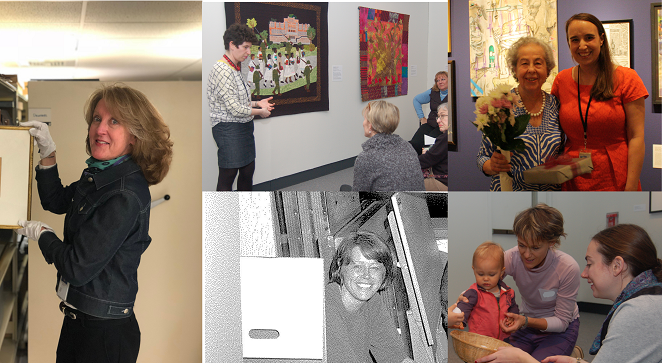
Where Do We Come From, Where Do We Go? Three Points of View on Museum Life and Work
By Corinne Flax and Kathleen Holko, Bruce Museum
Assessing the museum field’s past, present and future is a challenge. To tackle these topics, we interviewed three members of the Bruce Museum staff, from different departments and in various career stages, for four hours over two days. Some of their experiences, and points of view, surprised the interviewers. Anne von Stuelpnagel, the museum’s Director of Exhibitions, immigrated to the United States from Germany in 1977 and has been at the Bruce since 1980. Kirsten Reinhardt, the museum’s Registrar, has worked at the Bruce on and off since 1987. Laura Stricker served as Manager of Youth Family Programs from 2015-2018 and has since moved on to a museum research position in Providence, Rhode Island.
All three came to the museum field for different reasons and with almost 80 years of museum experience between them; they tackled big questions with candor and thoughtfulness. The interviewees addressed the role of trustees, financial affairs, best practices and current trends. For Anne, it seemed a natural fit to design exhibition spaces with her art degree and interest in set design. Kirsten pursued a career in museum studies from an early age, choosing both her undergraduate and graduate programs because there was a museum on campus. Laura was inspired by her older sister, an exhibit designer, to pursue a career in museum education. Perhaps the toughest obstacle that all three have faced is explaining to friends and family what they do.
As your read the following interview highlights, please keep in mind that all the viewpoints represented are those of the interviewees. They are presented to provoke thought, questions, and discourse, not as accepted fact. While the interview has been edited for brevity and clarity, it has not been edited for content.
Interview:
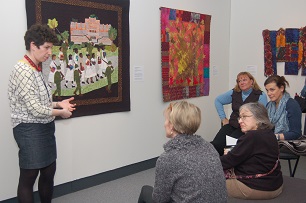
(Corinne Flax - left)
Corinne Flax (CF): When you tell people you work at a museum, how do they react?
Kirsten Reinhardt (KR): My response is always the same. I say I'm an archaeologist because people think that's interesting. People often tell me, “That's what I wanted to study but my parents wouldn't let me.” It’s sad; I hear that often from women. Sometimes, I'll say I'm a collections manager; that's a familiar term for people.
Anne von Stuelpnagel (AvS): Likewise, Director of Exhibitions doesn't mean anything. I always explain it’s like set design but for exhibitions. People try to get it, but not really. I will then just say I paint walls and build cases.
Laura Stricker (LS): Mine sounds similar. I start with saying I work at a museum to keep it simple. If I say museum educator, they think I'm a curator. They do think it's really cool; but, they think I hang art on walls. When I run programs, everybody asks me if I’m a volunteer. I tell them I work here; they're shocked.
AvS: I think there are key positions people comprehend. Curator, they get that. Director, they get that. Beyond that, they really don't.
CF: People often take any service or product they utilize for granted. They don't think too hard about it.
AvS: That's probably true. I'm trying to compare it to other arts fields. In theatre you have defined roles. People get it because they read the program: set design, stage manager, etc. In the museum field, the roles are not printed out anywhere.
Relatively few people understand what it takes to keep a museum running. However, it is hard as a museum professional to know what will serve the public. As the interview continued, a question that was meant to address how museums serve their community turned into a discussion of lessons learned when trying to reach a broader audience. As an institution that was established over a hundred years ago, the Bruce, like many other organizations, is dealing with the rapidly changing demographics of the surrounding communities.
CF: Is the museum field inclusive?
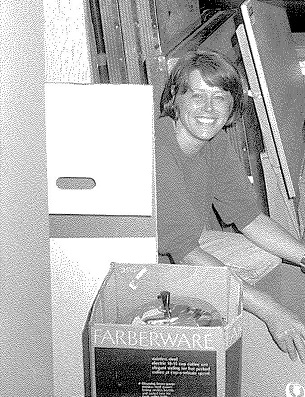
(Anne von Stuelpnagel)
AvS: I think there’s been an effort in the last 20 years at least to be inclusive. You see the change when you go to conferences. Previously, there were hardly any African Americans or Native Americans. Not many men either. I think it’s changing. There has been a push to open up minds.
KR: I went to see a contemporary art exhibition about the Day of the Dead. The curator said she had deliberately done it because there was a large Latin American population in the town who didn’t visit the museum. They scheduled programming around it, but nobody came.
AvS: One way to reach new groups is to start a conversation and find out what interests them. Many people are too busy. Do they have time to visit if they have multiple jobs?
KR: That's what it came down with the Day of the Dead exhibition. It wasn't on their radar because they were too busy with work and getting their kids to school.
AvS: Years ago, we hosted a Japanese Folk Art traveling exhibition. It was great material. We invited Japanese residents as interpreters to tour the show. We reached out to the Japanese community in Greenwich to make sure everybody knew about it. The attendance was pitiful.
KR: We had a similar situation with an Asian kite show in Stamford. Many countries were represented where kite fighting is important and is a huge part of festivals. We sent out a lot of information. Nobody came.
CF: If you were going to do these shows again, what would you do differently?
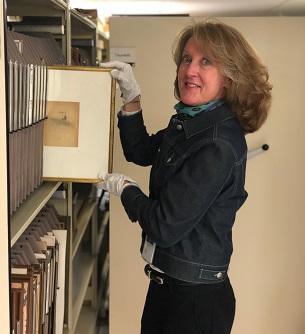
(Kirsten Reinhardt)
KR: We did a kite flying day at another institution in the center of Stamford. Many people came. That should have been first. We promoted the exhibit at the event, but nobody came from that event to the exhibition. It was a beautiful day. There were kites flying and many different nationalities represented within that crowd. We did not see a bump in visitation.
AvS: It is difficult to interpret from our perspective what other people think of as their heritage. Likewise, we did a couple of pre-Colombian exhibitions. We sent out invitations to the Latin American community. They were uninterested. We would do it again, but not as an exhibit that attracts people whose heritage it actually is.
LS: Museum associations have made it their mission to make museums inclusive. They publish helpful articles on the topic. The theme for the 2018 New York City Museum Educators Roundtable’s Annual Conference was “React and Respond: The Next Steps.” The conference committee members are from New York museums, which have diverse audiences and more opportunities to be inclusive. As a small institution in Greenwich, we don't have the same audience as New York. I think many New England museums have the same situation. Inclusivity extends beyond race and gender but to age as well; welcoming in multigenerational visitors that may not feel like your target audience is important.
AvS: We talk about asking people, but have we done it? It can shape our thinking.
KR: We could learn from that.
CF: For a lot of people, museum-going is a thing to do. It doesn't matter what’s there. It’s important to build an "I go to museums" attitude among new audiences.
AvS: You want to broaden everyone's horizon. If you create a narrow program to serve the familiar group of people, they feel comfortable; but, do they learn something new? Not necessarily. Maybe the why and how they're coming and what they experience is important.
LS: You're not going somewhere you're uncomfortable.
KR: That's why education is important. When a school group visits, you hope that one student goes home, tells their family about the museum, and suggests they go there.
This conversation raised many questions. What does it mean to truly understand your visitors and community? How can we as museum professionals create exhibitions and programming that complement one another and drive visitation? Perhaps most importantly, what do our communities need from museums?
When looking at the big picture for museums, communities and visitation are one side of the story. Another side is the behind the scene decision makers; the museum’s board of trustees. A further component to the big picture is the financials behind it all, the pool of money that an institution has to play with.

(Kathleen Holko)
(Kathleen Holko) KH: What role do you think trustees play at an institution?
AvS: A trustee should be concerned with governance of an institution, including its mission, future, and finances. As an institution grows, the trustees’ role changes; in a new institution, its trustees will be hands-on. There's a phase when trustees need to step back and assume the governance role.
KH: What motivates people to become trustees?
AvS: Love for the non-profit’s subject.
CF: Is this what you think should be motivating them or what actually motivates them?
AvS: A little bit of both. It could also be a power or prestige factor. It could be what your wealthy neighbor is doing.
KR: I think community service is part of it, too.
LS: I don’t have a lot of experience with trustees. It might have to do with being in education. Other departments might interact with trustees more.
AvS: I'm glad you don't have to worry about it. When the buffer between the staff and the board has gone, it goes to your core. You don't feel there is protection for you when a trustee decides they don't like you anymore.
KR: Sometimes the opposite is equally detrimental, when you have a board that isn't involved.
AvS: In the ideal case, you will have a dynamic director who is capable of motivating the board and keeping them active. Frequently, there are disagreements between directors and trustees.
CF: When you started, what were the primary funding sources? Has that changed?
AvS: In the 80s, most of our funding came from individuals. The membership of the institution supported the programs we offered. Over time, support shifted to corporate funding, which fell apart after 2008. Now, if there is corporate support, it comes from the advertising department. Corporations see their contribution as advancing their own business.
KR: I see a lot of in-kind donations or services. They print your magazine for the fundraiser or free water delivery rather than cash. That is a change after 2008.
AvS: It's easier to justify and costs them less.
KR: I've worked at institutions with municipal support. If the economy was bad, then the allocation was lower. If the political party changed, then that would have an effect.
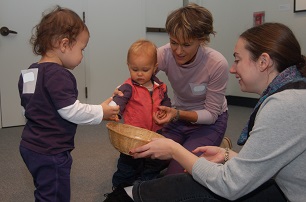
LS: In the United Kingdom, they have heritage funds. I believe those are government funded. The National Children's Museum was recognized by Congress as a national museum, but they did not support us.
KH: As funding sources have changed, have museums adapted?
AvS: In response to funding sources, museums should focus on community service as opposed to being didactic institutions. I think that's the reason education and informal learning has grown.
KR: The staffing structure has changed also. Look at the staff lists of New England museums. The curatorial staff is small, but development and education are big. The focus of the staff structure has changed.
KH: The Met went through a round of layoffs recently. Many people were in curatorial and collections care.
AvS: Years ago, we never had a grant a writer. We had two people in development. They did everything. Now, we have one person just for grants.
The conversation continued, and continues! For the interviewers the main takeaways were that the museum field is ever changing. We as museum staff must adapt to the times. What can we do to convince our public that museums are important? As professionals we need to develop new methods of informing the public about the careers and opportunities available at our institutions. We’d love to hear what you think, please shoot Corinne Flax or Kathleen Holko an email, with your opinion at cflax@brucemuseum.org or kholko@brucemuseum.org.